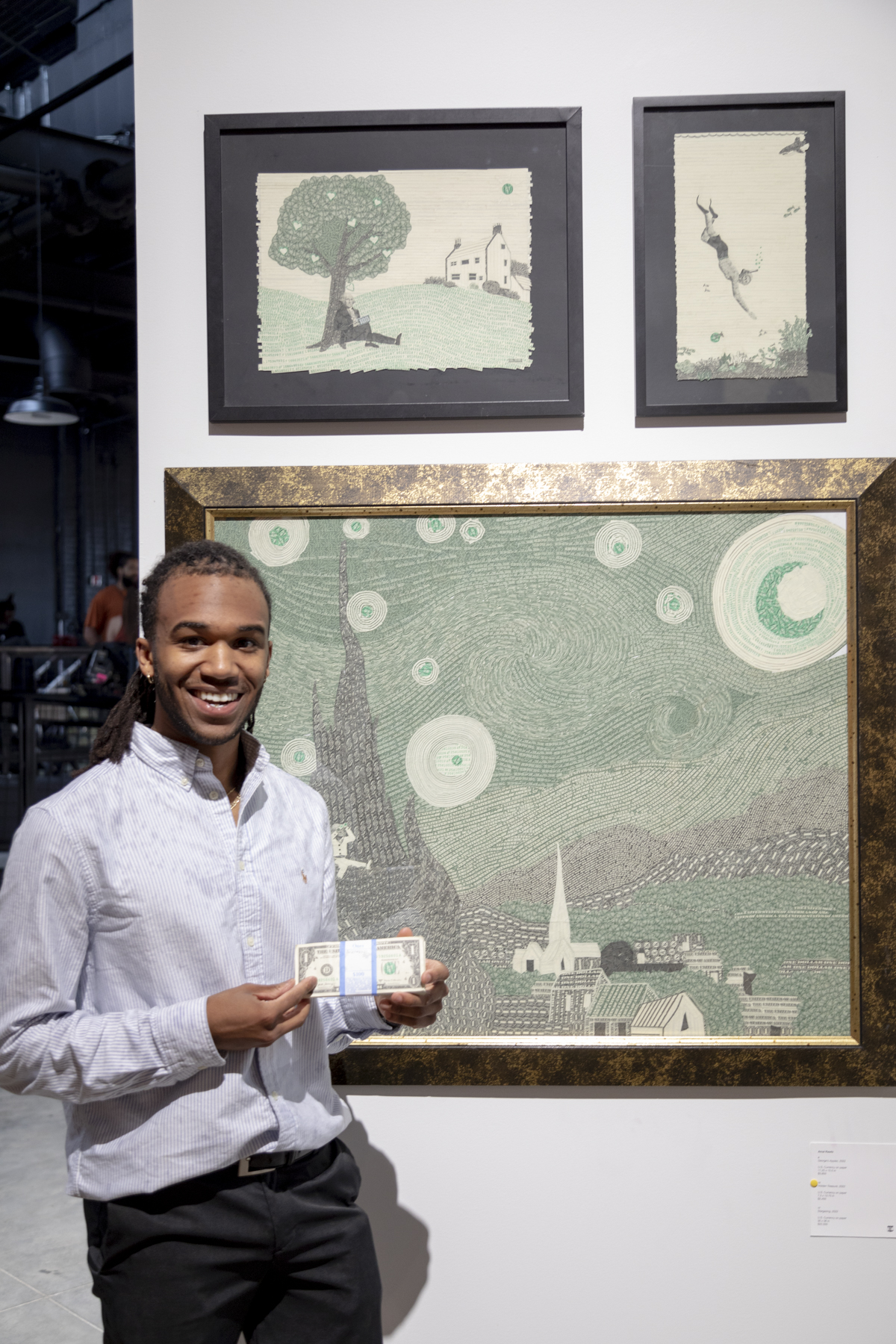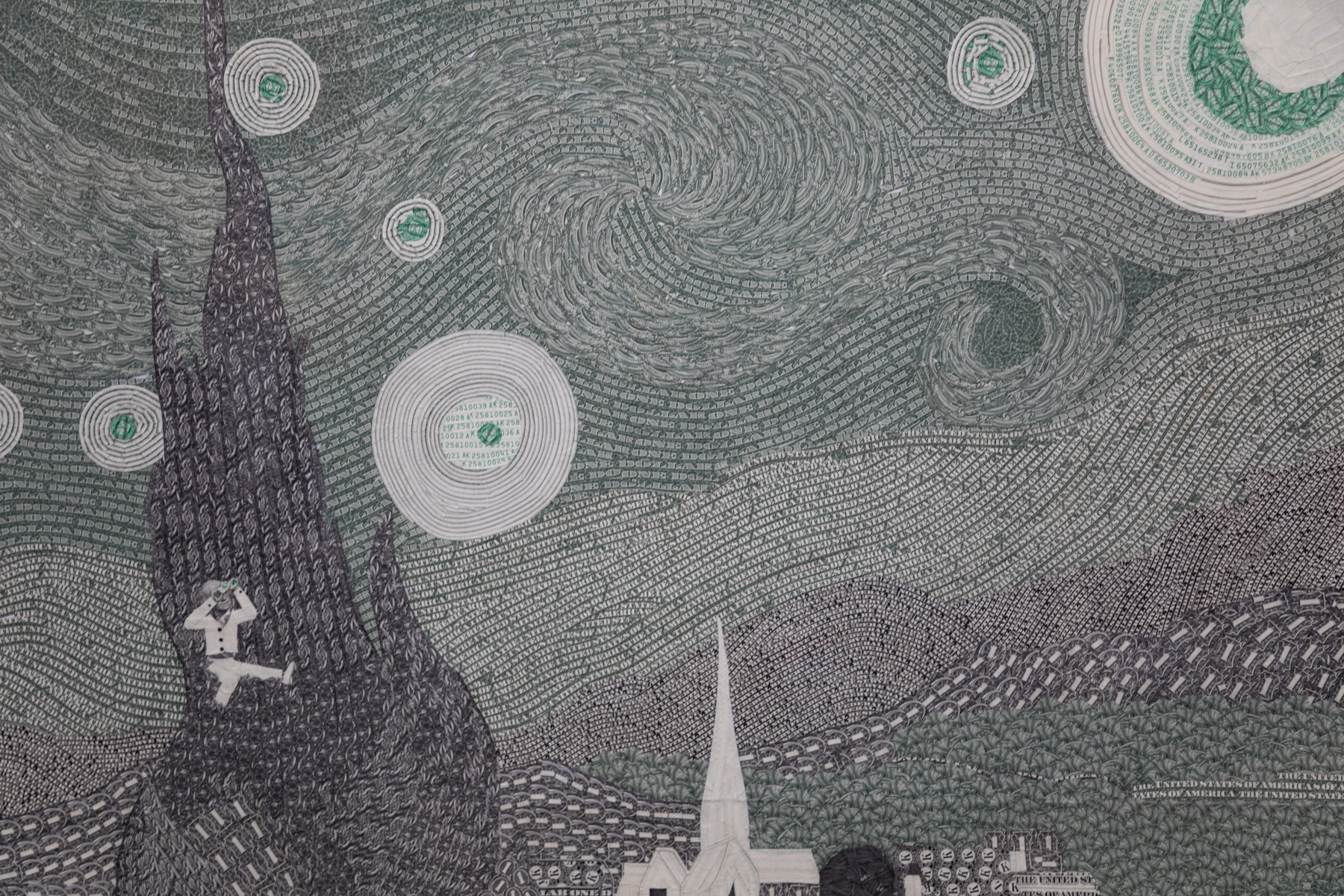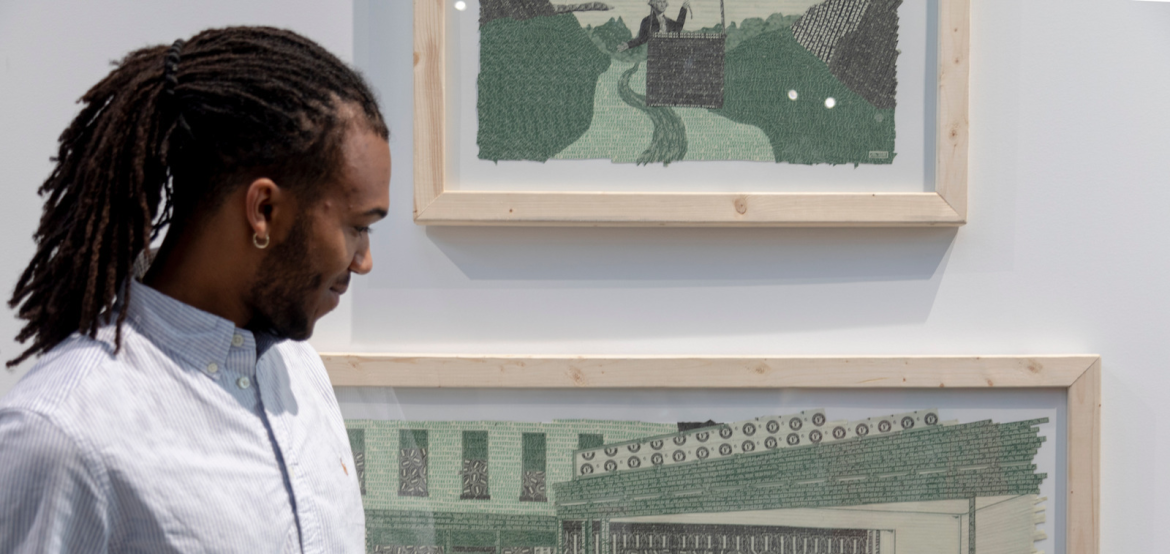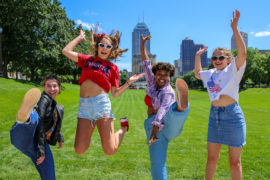Growing up learning about art in school, and choosing his “major” at his magnet high school in Louisville as visual arts, Amai Rawls has always been interested in drawing and painting. It was only when he decided to make some gifts for his friends in high school with twelve dollars that he saw what he could do with money as art.
Rawls is a Louisville-based artist who uses real, chopped up currency to recreate famous paintings like Van Gogh’s The Starry Night and Edward Hopper’s Nighthawks. He also creates visuals of George Washington swimming and flying in a hot air balloon, among other creations. His work has a refreshing sense of playfulness that intrigued BUTTER 2 spectators. Want to know why he does it and if he’d ever use fake money like we did? Read the Q+A below.

Cory Cathcart: How did you hear about BUTTER?
Amai Rawls: I used to be a cyclist and I met one of the curators through a guy on my mileage cycling team. The curator was his wife. He had seen that I was leaving cycling and I was starting to take art seriously. He said they had an art gallery at home, and they’d love to talk to me about my art. He said “What are you trying to do with this?” And I said I’m taking this serious. I want to be an artist, I’m taking the steps. We got in contact and they did a studio visit and they liked what they saw and heard and eventually, you know, I was here.
CC: When was that initial studio visit?
AR: The initial studio visit was in, I believe, either late February or March. It was this year. She [the curator] was telling me in a few weeks I’d get something in the mail. A few weeks went by and I’m waiting for the mail… [Laughs] It was a month and a half or something later, and my grandma told me, You have a package in the mail!” and I didn’t know what it could be, maybe something from Amazon coming in a few months later or something like that. Then, I saw the package and the box looked like butter. I was like, “Ahhhhhh.” And instantly smiled.
CC: Did you go to school for art?
AR: I want to say yes, but technically I say no. I learned a lot of art through middle school and high school. I didn’t go to college for art. But my high school that I went to was duPont Manual. They had a major system and I was able to major in visual arts. We had eight classes and four of my classes were visual arts classes. We had plenty of time to learn about things like art history, exploring different mediums, and sculptures. We could even start some welding, it was really cool. There were so many opportunities there for us to figure out our style. But I went to college for business entrepreneurship. I felt like they would help each other. I would have loved to go to college for art, but there’s the whole debt side of things and going to school and having a career in art is never guaranteed so I didn’t want to take that risk.
CC: You use real money in your art, right?
AR: Yes. real, authentic money, I’ve had so many people ask me, “Hey, do you ever think about printing out dollars to be able to cut them up to save your money?” And I’m like, no. It’s the authenticity of it being really US currency. It does something and it makes it a lot different than using fake dollars. I would never use fake dollars.

CC: What inspired you to create with money?
AR: In elementary school I had an art teacher in third grade and before class started she would give us a five minute video, or she’d show us a famous painting, to give a little art history and learn about some art. One day she put up this cool video and it was this artist named Mark Wagner, and he made art out of money. I thought wow that is super cool, but I want to paint and I want to draw. So I did all that. My sophomore year of high school, I had two really good friends give me a gift for Christmas. It was probably my first time getting Christmas gifts from people. I was like I don’t want to buy a gift. I’m the type of person that wants to make a gift for someone. It’s a lot more sentimental and something you want to hold on to. I asked them what their favorite animals were and I had twelve dollars on me so I was like, let’s give it a shot. I gave them to them, and they absolutely loved them. That’s where it all started.
CC: So is a theme in your work materialism?
AR: When people see money, or when people think about money, they think about what the world revolves around. We say the world is run on money and money is evil. I feel like all of the emphasis is placed on money having value and really it’s just a piece of paper. In itself, money really is art. Someone takes the time to do the stippling on George’s face. They take multiple hours to etch that out on a metal plate. Someone went in and they added all the patterns. People don’t look at money, they just kind of spend it or you have it in their bank account. It’s just numbers on the screen. I want people to be able to appreciate money for what it is, and it’s art. Also with that, the theme that my work revolves around is more mental illnesses and mental health issues that aren’t really physical things that you can point out. And they’re also not really talked about a lot. Especially within the Black community, where mental health issues aren’t really something that we talk about a lot. It’s very taboo. Being able to place a monetary value on that is really the reason I do it.




